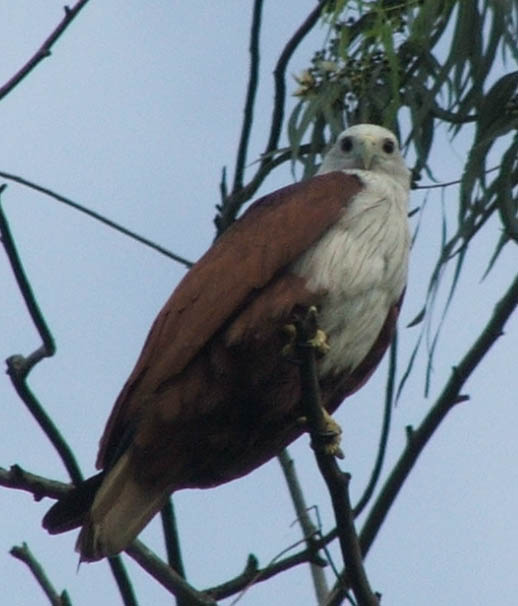|
| 질의: Birds of prey | 결과: 566번째/1662 | |
Brahminy Kite (Haliastur indus) - Wiki
| 제목: | Brahminy Kite (Haliastur indus) - Wiki
| |

| 해상도: 518x606
파일크기: 49953 Bytes
등록시간: 2007:01:29 00:01:03
|
Brahminy Kite
From Wikipedia, the free encyclopedia
[Photo] Picture By: Srihari Kulkarni, Bangalore, India Taken at Hebbal, bangalore, India
The Brahminy Kite, Haliastur indus is a medium-sized bird of prey in the family Accipitridae which also includes many other diurnal raptors such as eagles, buzzards and harriers.
This kite is a familiar sight in the skies of India and southeast Asia and as far south as New South Wales, Australia, through which region it is widespread and resident.
It has a typical kite flight, with wings angled, but its tail is rounded unlike the Milvus species, Red Kite and Black Kite, which have forked tails.
The Brahminy Kite is an attractive bird, with chestnut plumage except for the white head and breast and black wing tips. The juveniles are browner, but can be distinguished from both the resident and migratory races of Black Kite in Asia by the paler appearance, shorter wings and rounded tail.
This species nests in trees, often close to water. It feeds as a scavenger.
Four subspecies are recognized:
Known as elang bondol in Indonesia, the Brahminy Kite is the official mascot of Jakarta. It is evaluated as Least Concern on the IUCN Red List of Threatened Species.
http://en.wikipedia.org/wiki/Brahminy_Kite
| The text in this page is based on the copyrighted Wikipedia article shown in above URL. It is used under the GNU Free Documentation License. You may redistribute it, verbatim or modified, providing that you comply with the terms of the GFDL. |
|
^o^
동물그림창고 똑똑전화 누리집
^o^
|
|